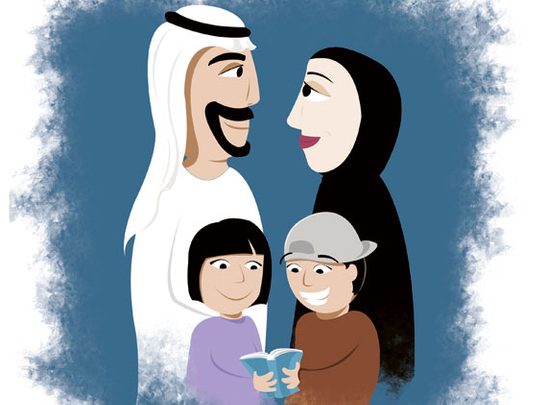
When we define the term development in a broader arena, it means not only high per capita income, also means well-being in general.
We need to think about the availability of commodities and consider their use. In order to address the issue, in 1999, Amartya Sen, a Noble laureate in Economics in 1998 called ‘functioning', what a person does with the commodities of given characteristics they possess.
He identifies five sources of disparity between real incomes and actual advantages: personal heterogeneities, environmental diversities, social climate such as prevalence of crime and violence, relational perspectives and distribution within the family.
It can be argued that the approach to measure development has often been supplemented by causal reference to non-economic social indicators. Such indicators include gains in literacy, schooling, health conditions and services, security and provision of housing which are considered in the United Nations Human Development Index (HDI).
When we would like to see the status of development of non-economic social indicators in the GCC countries, it attracts attention. The GCC members have a high per capita income ranging from $24,208 (Dh88,901) to $77,178 (PPP) in 2010. This is compatible to high-income OECD countries.
Such standards bring special interest to discussions on the influence of non-economic social indicators compared to high-income OECD countries. Such non-economic social indicators include gender inequality, health, education, poverty, sustainability, human security, and the Human Development Index (HDI).
Gender inequality
The gender inequality in education has a direct impact on economic growth by lowering the average quality of human capital. Economic growth is indirectly affected by gender inequality on investment and population growth. This means that the lower the gender inequality in a society, the higher the economic growth.
Studies based on the HDI report (2010) found that there is a variation in gender inequality indicators such as maternal mortality and secondary education among the member states of the GCC. However, some members like Kuwait and Qatar have 4 and 12 deaths of women per 100,000 live births and 1.18 and 1.13 female/male ratio in secondary education respectively.
Meanwhile other members such as the UAE, Bahrain and Saudi Arabia are very progressive in their results of these indicators. Therefore, the above data clearly indicates that GCC gender inequality indicators are performing better and/or compatible compared to the US (11 deaths of women per 100,000 live births and 1.009 female/male ratio in secondary education).
Such data reflect decent and healthy standards of living. They also indicate workable health policies and management that are suitable for the local culture and traditions of the people.
Studies show that there is a variation in expenditure on education as a per cent of GDP among member countries. However, it shows that the utilisation and effectiveness of expenditure on education is well documented.
All members have increasingly higher levels of adult literacy rates and combined gross enrolment ratio in education (both sexes). There is little variation among member states.
Internet users are higher in the UAE and Bahrain indicating that people in those two countries are adapting with the ICT faster than other members. The mean years of schooling, except Kuwait and Qatar, show results that are compatible with the UK, US, Canada or Belgium.
The GCC member countries are doing well managing poverty as none of them have any people living in poverty. Understanding and considering the distribution of per capita carbon dioxide (CO2) emissions is important in drawing up international climate change proposals and incentives for participation.
Carbon dioxide emissions are critical to both assessing the potential impact of climate change and evaluating the cost of emissions. Based on the data provided in the HDI report (2010), the per capita carbon dioxide emissions in GCC member states are higher (except Saudi Arabia and Oman) and protected areas are lower when compared to the UK and US.
Adjusted net savings of GCC member states demonstrate positive values (except Saudi Arabia and Oman) indicating that the economies are on a sustainable path. Thus, the member countries of the GCC should continue with efforts to maximise efficiency of the management of carbon dioxide emissions.
UNDP (2009) focuses on human security and has a broad development agenda that determines whether people are able to live secure lives and achieve their potential. According to the HDI report (2010), the GCC countries are outperforming the UK or US in terms of managing International Human Development Indicators of the UNDP.
The human security indicators in this category include refugees, unemployment rate, homicide rate, robbery rate and population affected by natural disasters. From this data, it can be argued that the human security situation in the GCC is much better when compared to high-income OECD countries.
Composite index
The UNDP's Human Development Index is a composite index combining all indicators of human progress that vary from unity for the highest achievement to zero indicating the lowest achievement.
Under this measure, countries are classified into three groups based on the HDI values. Such groups include high human development (HDI exceeds 0.8); medium human development (HDI ranging from 0.5 to less than 0.8), and low human development group (HDI less than 0.5). The UAE, Qatar, Bahrain belong to the high human development group.
It is evident from the above discussion that the GCC has improved and in many cases is progressive in terms of the the HDI values derived from non-economic social and economic indicators.
However, there is a scope and need for further improvement of some non-economic social indicators. In order to reduce gender inequality, improve health and education, a family-oriented as well as community-based motivation programme considering local culture, tradition and lifestyle should be initiated.
This will boost people's willingness to take advantage of well-established health, education, facilities and services.
The author is professor at the College of Business Administration, Al Ain University of Science and Technology












